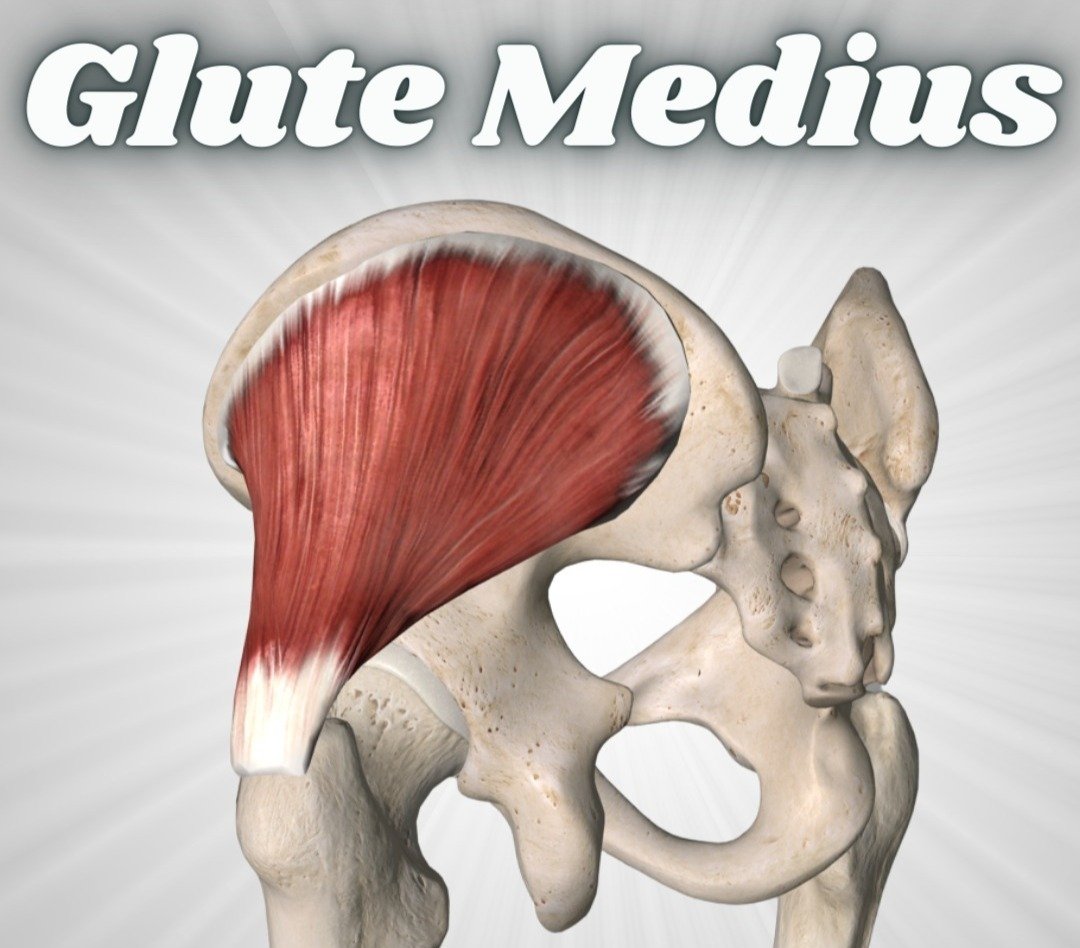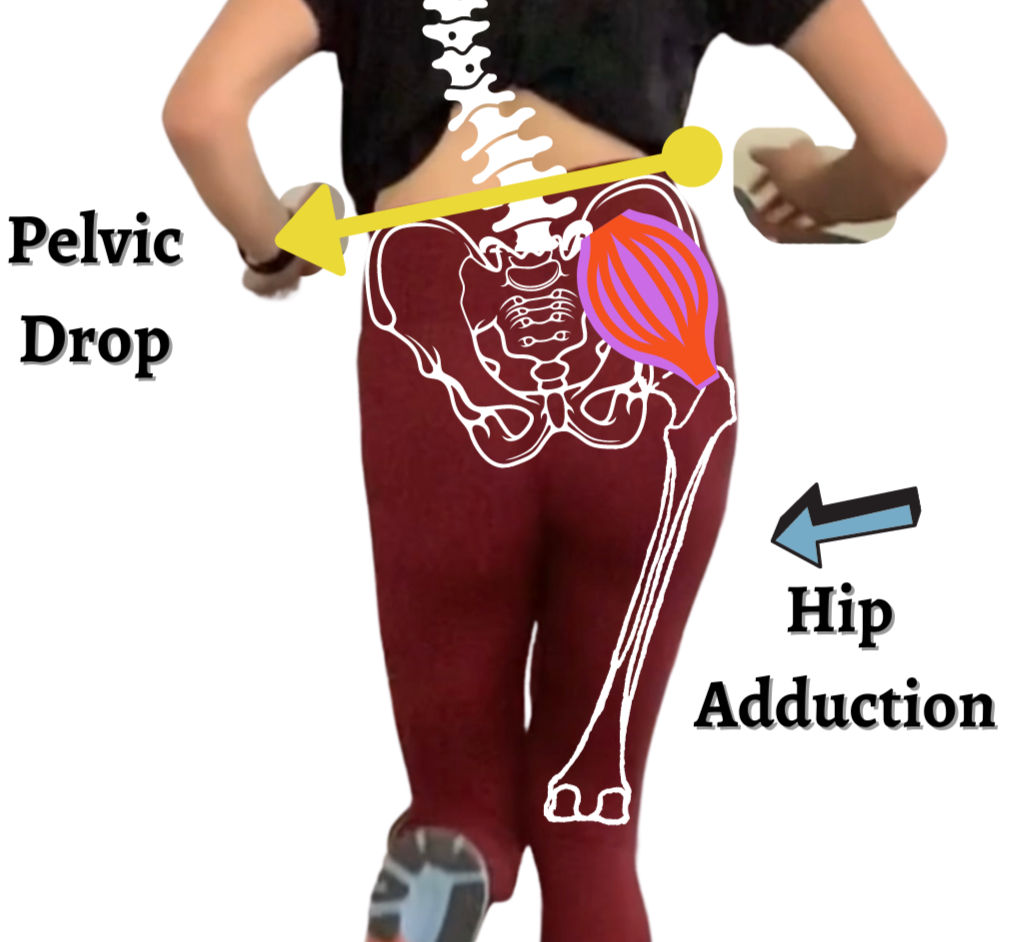The Runner’s Hip: Importance of Glute Medius
Ah the Gluteus Medius! The name alone doesn't garner it with the credit it deserves, as it almost insinuates it's inferiority to the larger glute maximus.
While the glute max may be the workhorse, the glute med is what allows it to create force by creating a stable foundation. It's the unsung hero of the hips.
As a physical therapist and personal trainer, it is probably where I most often see dysfunction in the form of weakness or lack of recruitment. It is often neglected in many strength routines which is detrimental for any athlete where running, jumping and cutting are primary movements. At least with basketball players, the demands of their sport forces them to use the muscle by cutting laterally. With runners, who's sport solely demands running in a straight line, it is vastly underutilized and undertrained.
Function
The glute med sits on the lateral upper portion of your buttock. It fans out along your pelvis at the iliac crest and it's tendon inserts on the greater trochanter of the outside of your hip. In open chain (or when your leg is not on the ground) it swings your leg out to the side. When your leg is on the ground (closed chain) in single leg stance like in walking or running, it helps keep your pelvis level by hiking it up vs. letting the opposite side drop down. Since we spend more time walking than swinging our leg around, this is it's primary function as a stabilizer.
Open Chain
Closed Chain
Pathology & Dysfunction
Dysfunction of the glute medius in running results in a drop of the pelvis each time the leg is loaded and/or an inward collapse (or adduction) of the femur. The glute med, both at the pelvic insertion and distal insertion at the lateral hip can be a site of pain and tendinopathy. When you consider this drop and collapse over 1,000's of steps you can see how these tendons can become irritated. In fact, I would argue most "bursitis" diagnoses I see are in fact a tendinopathy of the glute (or a radicular pain coming from the back).
If it's not an injury of the muscle itself, dysfunction of the glute med and subsequent movement patterns pictured above can result in a number of other issues both up AND down the chain. These motions place the IT band on stretch which can create friction at the lateral knee resulting in IT band syndrome. You can see how dropping of the pelvis pulls the lumbar spine out of alignment leading to issues at the low back. As the hip collapses in it pulls the knee with it leading to problems with the meniscus, runner's knee, etc. Lastly, inward collapse of the knee places strain on the inside of the lower leg leading to shin splints, bone stress injury or pain at the foot/ankle like plantar fasciitis and Achilles tendinopathy. See the importance yet!
Train It Right
With the barrage of exercises out there it can be hard to know which is best. So let a PhysicalTherapist/Personal Trainer (and science) help make it easier for you. This study placed electrodes on the glute medius and measured activity on a number of different exercises. It measured MVIC which is the Maximum Voluntary Isometric contraction. Here are the top glute med activators...
Here's a video of each exercise with some tips on execution...
Side Lying Leg Lifts
Pelvis is perpendicular to the floor and should remain steady throughout
Bend bottom knee and create a kickstand if needed for more stability
EXTEND your hip slightly and lift up and down from the floor, your leg shouldn't drift forward causing emphasis on the hip flexors
KEEP A NEUTRAL SPINE! As you hold your hip in extension, make sure you don't take your pelvis along with you.
Front Plank Hip Extension
Create a neutral spine by imaging a light magnet drawing ribs toward pelvis and pelvis toward ribs
DON'T over-tuck your pelvis, your lumbar spine should have a small natural curve
Imagine your beer is balancing on your tailbone and don't let it spill
Reverse Clamshell Variations
Stop with your basic clams and add a little spice with these reverse clams
There were actually 2 versions of the reverse clam on the top of this list
Start with option 1 and progress to 2 for more glute med
As always, pelvis should remain steady and stable
Single leg Squats
These are not easy to do correctly! Try the progressions above to work your way to a full single leg squat with good control
Use varying heights of a surface to make it easier or harder
Side Plank Leg Lifts
Now we're getting spicy, this exercise actually took the cake for the TOP 2 activators on the list. How? Well #1 overall goes to the bottom leg on the exercise which got a 103% MVIC and at #2 was the top glute med! Which came in at 88%.
You get a lot of bang for your buck on this one, but it is advanced
Start by nailing a regular side plank with a steady perpendicular pelvis and no sagging of your hips, then try the hip dip or other dynamic options
When ready try the bottom leg in a kickstand first before going for the full thing!
If you're wondering if your routine is lacking strength in a certain area or having a hard time breaking a cycle of injury don't hesitate to reach out!







